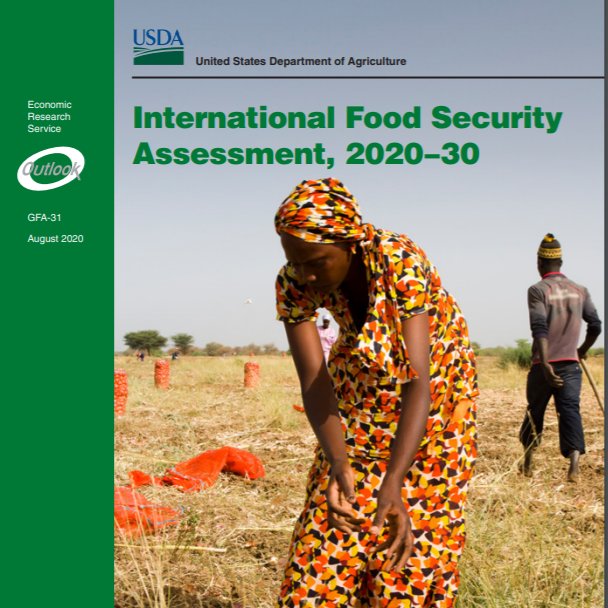International Food Security Assessment, 2020–30 (August 2020, 81 pages)
Report summary (August 2020, 2 pages)
Report summary (August 2020, 2 pages)
The authors–Felix Baquedano, Cheryl Christensen, Kayode Ajewole, and Jayson Beckman–say the bottom line is this:
“In the 76 low- and middle-income countries examined in the report, the number of people considered food insecure in 2020 was estimated at almost 761 million people or 19.8 percent of the total population. The shock to GDP from COVID-19 is projected to increase the number of food-insecure people by 83.5 million people in 2020 to 844.5 million and increase the share of the population that is food insecure to 22 percent.”This year’s report looks at the income shock associated with the COVID-19 pandemic on food security in each of the 76 countries, which are located in Sub-Saharan and North Africa, Latin America, and Asia.
Among the findings are:
- The number of food-insecure people in 2020 is estimated at 844.3 million, an increase of 83.5 million (11 percent) due to COVID-19 income shock. This implies that 22 percent of the total population of the 76 focus countries is unable to consume 2,100 calories a day, an average caloric level necessary to sustain a healthy and active lifestyle.
- Most of the increase in people estimated to be food insecure as a result of the COVID-19 pandemic are in Asia (41 million people) and Sub-Saharan Africa (35 million people).
- Even with the income impacts from COVID-19, food security is projected to improve in all 76 countries over the next 10 years. By 2030, the share of the population that is food insecure in these countries is projected to fall to 10 percent (456.8 million people), a 46 percent drop from 2020 in the number of food-insecure people. Despite this sharp decline, the 2030 estimate of food insecurity is almost 13 percent higher than the pre-COVID-19 scenario.
- Improvement in food security is driven by income growth, relatively stable prices for major grains over the projection period, and lower population growth, particularly in Asia and in Latin America and the Caribbean.
- Per capita income in the following decade is projected to increase by almost 42 percent on average for the 76 countries, but this is 1.3 percentage points lower than the pre-COVID-19 estimate.
- The food gap, defined as the amount of food needed for all food-insecure people to reach the caloric target of 2,100 kcal/day, indicates the intensity of food insecurity. It can be expressed in calories per capita per day or in grain-equivalent quantities and is used to measure the intensity of food security at the aggregate level. For the 76 countries examined, the total food gap is projected to decline in all four regions from a total of 44.7 million tons in 2020 to 24.3 million tons in 2030.


No comments:
Post a Comment